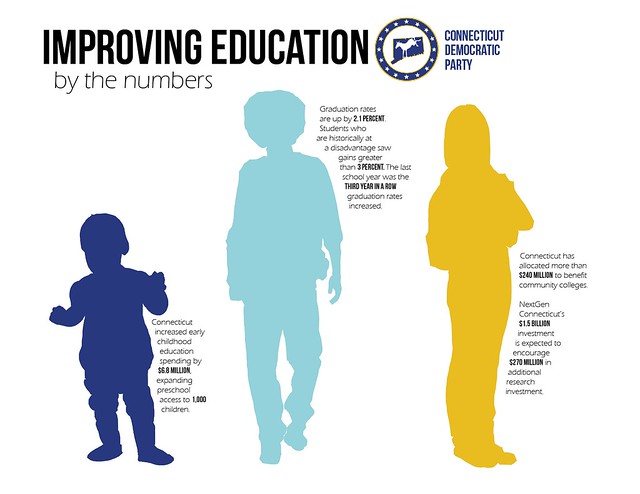Topline Connecticut is redoubling efforts to ensure that it’s children are receiving the best education possible, from pre-kindergarten to college and beyond. Overall, the state has increased education funding by more than $237 million.
The 2012-2013 budget increased funding for child care services by $3.8 million, and the education bill passed last year increased early childhood education spending by $6.8 million.
Thanks to these investments, in 2012 the National Institute For Early Education Research found that Connecticut was first among the states and the District of Columbia in total preschool spending per child, with each child receiving $11,725.
While more young students are gaining access to quality public education, fewer students set to graduate are being left behind. Overall graduation rates during the 2011-2102 school year went up by 2.1 percent, and students who are historically at a disadvantage — including those who are eligible for reduced-priced lunches and those whose first language isn’t English — saw gains greater than 3 percent. The last school year was the third year in a row graduation rates increased.
Community colleges are also getting more attention. The State Bond Commission has allocated more than $240 million in projects to benefit Connecticut’s community colleges, and legislation signed last year makes it easier for community college students to transfer credits.
At the state’s flagship university, Next Generation Connecticut’s $1.5 billion investment in science, technology, engineering and math (STEM) programs is expected to encourage $270 million in additional research investment in the next decade. University of Connecticut enrollment will increase by 30 percent, including 70 percent more engineering students. Investing education resources in these fields will ensure that students are competitive in the national and international workforce.
And Connecticut managed to accomplish all of this while protecting teachers. The state’s latest budget provides $10 million per year for teacher talent development and an annual $8.3 million for Common Core training. The education reform bill maintained union contracts, protected teachers unions’ right to arbitration and guaranteed a hearing for teachers at risk of termination.
